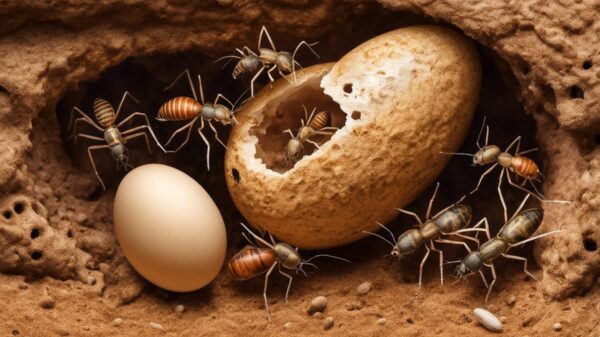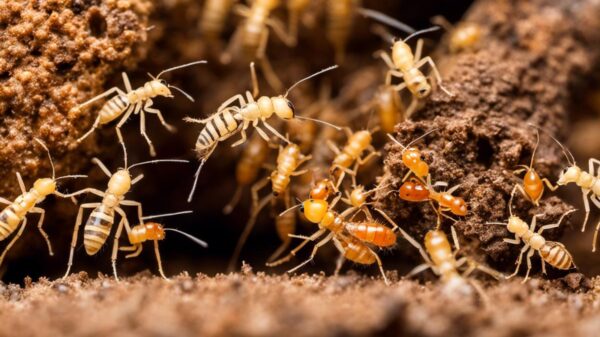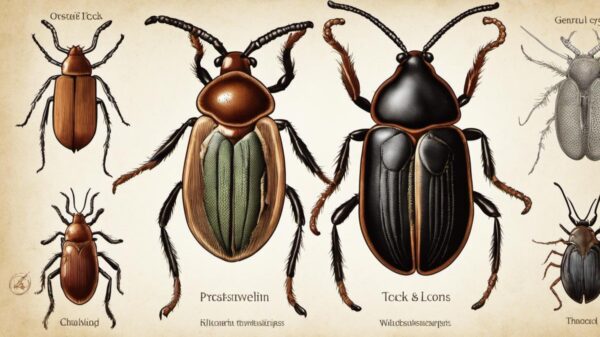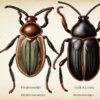Ants, despite their tiny size, can pose a major nuisance when they invade your lawn. Understanding their behavior and possible reasons for their presence is the foundation to tackling this issue effectively. Ant species and behaviors vary widely, and by truly knowing your ‘enemy’, you get a clearer perspective on how best to combat this infestation. This doesn’t stop at just getting rid of these critters, but also understanding the various methods of ant control, both chemical and non-chemical, as well their pros and cons. The realistic approach to this issue lies not only in tackling it, but also preventing it. Therefore, learning about preventive measures and proper lawn maintenance is equally crucial. Lastly, it’s important to implement your chosen ant control measures properly — knowing the right timing and safety precautions, and being able to gauge its effectiveness.
Understanding Ant Behavior
Understanding the Types of Ants and their Behavior
There are a variety of ants you might find in your lawn. These can include fire ants known for their painful sting, carpenter ants that are recognized by their ant hills, and field ants that prefer to infest lawns and gardens. It’s important to identify the type of ants you’re dealing with because some, like carpenter ants and fire ants, can cause significant damage to your grass and soil.
Ants typically have a social structure where the queen stays in the nest and the workers go out to gather food. The workers leave a pheromone trail to food sources that the other ants are able to follow. Understanding this behavior can aid in addressing an ant infestation.
Why Ants Are Attracted to Your Lawn
Ants may be attracted to your lawn for several reasons. For some ants, turf offers an ample source of food, from other insects to plant materials. They can also target unmaintained parts of the lawn, with overgrown grass and fallen fruits or vegetables providing an easy food source. If your lawn is regularly watered or has a naturally high moisture level, it can also attract certain types of ants.
Ants may also nest in lawns because they provide a better environment for the colony compared to other nearby areas. Sunlight reaching the soil helps in ant colony development, and tall grass or plants offer additional protection from predators and harsh climate.
Understanding Reason for Infestation
Identifying the reason behind an ant infestation is key in choosing the right method to get rid of them. For instance, if your lawn’s moisture level is high, reducing that may deter ants. The presence of aphids and similar garden pests can also contribute to ant infestation as ants feed on the honeydew these insects produce. If this is the case, tackling those pests may help in reducing the ant population.
Keeping your lawn clean and free from food sources such as fallen fruits or easy access to garbage can also prevent ants from being attracted. Regular maintenance, including mowing and garden upkeep, can deter ants from setting up a colony.
The choice of plants can also play a role. Some plants repel ants naturally and can be incorporated into the garden design to deter ant infestation. Considering the combination of the above factors can help manage and ultimately get rid of ants within your lawn.
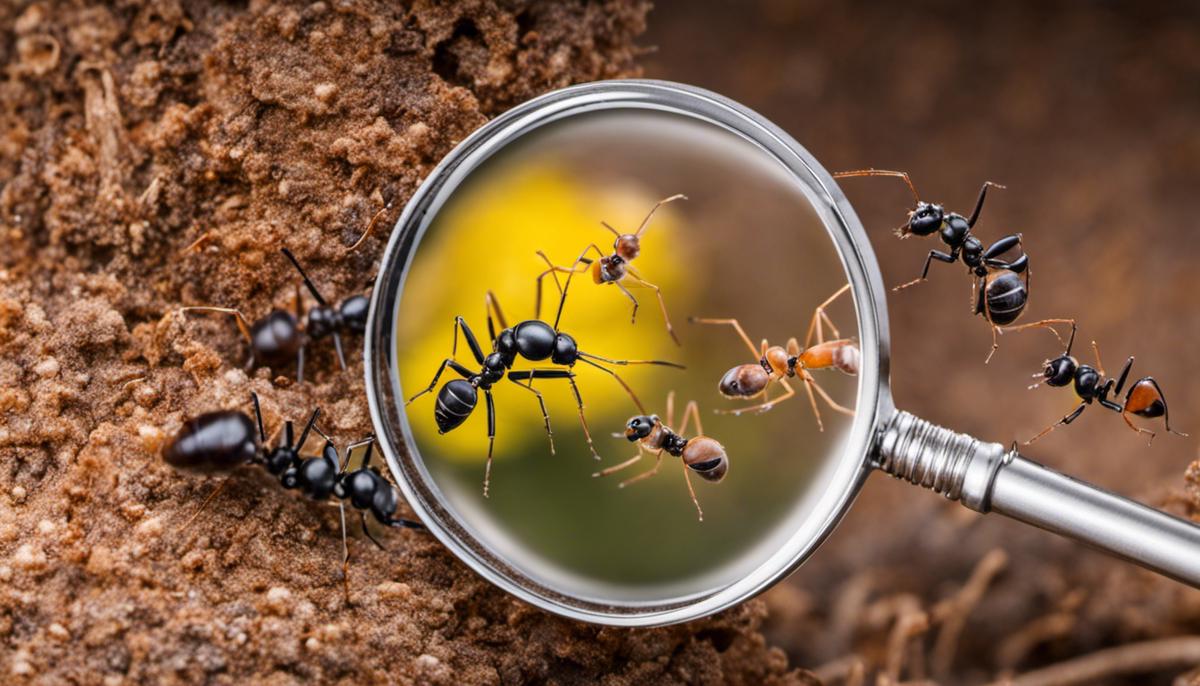
Ant Control Methods
Chemical Methods for Ant Control in Lawns
There are various chemical methods for ant control suitable for home lawns. The two most popular ones are insecticides and baits. Insecticides, such as carbaryl, pyrethroids, and organophosphates, are widely available and effectively work by killing ants directly or by disrupting their nervous system. These are very efficient but can also harm beneficial insects and pollinators, and may be toxic to pets and humans if not used correctly.
Ant baits, on the other hand, contain a slow-acting insecticide combined with a food attractant. Ants take the bait back to the colony, where it’s shared, thus killing the entire colony over time. Baits are generally safer for non-target creatures and humans, but they might take longer to have an effect and require careful placement to prevent pets from eating them.
Non-Chemical Ant Control Methods for your Lawn
There are also numerous non-chemical alternatives for managing ant populations in home lawns. These alternatives are deemed as more ecologically friendly and safer for household pets and children.
Boiling water is a cheap and effective method. Pouring a few buckets of boiling water directly onto the ant piles will instantly kill many ants and devastate the colony. However, this may not reach all ants if they are deeply burrowed, and it can also damage the grass and other plants in the immediate area.
A naturally occurring substance called diatomaceous earth can also be used to control ants. This is a powder made from the fossilized remains of tiny aquatic organisms. The sharp edges of the particles cut the ants, causing them to dry out and die. This method is safe for humans and pets, but will also kill beneficial insects.
Organic solutions like essential oils (such as peppermint or tea tree oil) or vinegar can repel ants. They disrupt the scent trails ants use to navigate, making these options good for preventing invasions. However, these need to be reapplied regularly and might not eliminate established colonies.
Finally, brutal biological control can also be effective. This involves introducing natural enemies, such as parasitic wasps or predatory insects, to the lawn. But this should be done with caution as these insects could themselves become a nuisance.
Final Remarks
All these methods have their pros and cons. It’s important to carefully consider which one aligns most with your needs and circumstances – whether that’s safety for family and pets, the sustainability of the method, or the desired speed of results. Some methods, like boiling water and ant baits, can be used in conjunction for maximum effectiveness.
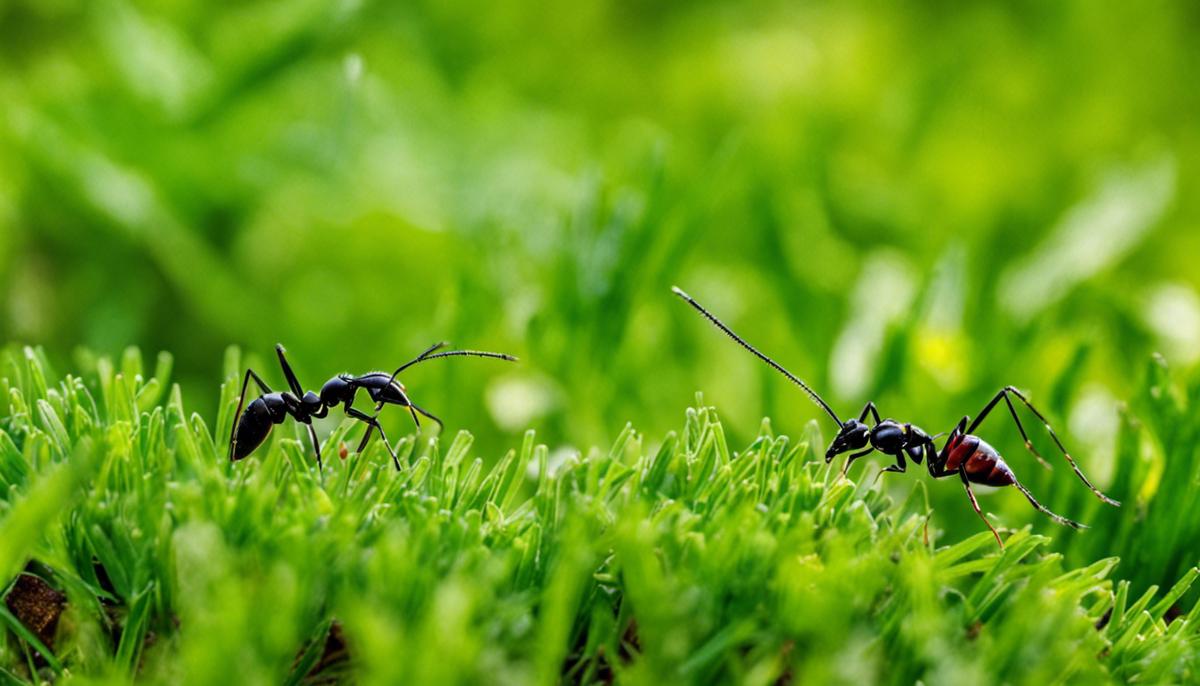
Preventive Measures
Regular Lawn Maintenance
One preventive measure to avoid future ant infestations in your lawn is regular maintenance. This includes keeping the grass cut at a healthy height to discourage ant colonies from setting up home. Avoid over-watering your lawn as ants are attracted to moist areas. A good practice is to water early in the morning, which will give your lawn time to dry before nightfall. Additionally, ensure your lawn is free from any leftover food or sweet substances as these attract ants.
Use Natural Ant Deterrents
Using natural ant deterrents around the edges of your lawn is an effective way to prevent infestations. Certain plants, such as mint, rosemary, and tansy, naturally repel ants and can be used as a barrier. Additionally, certain substances such as cinnamon, vinegar, or coffee grounds can disrupt the ants’ scent trails, thus preventing them from finding their way back to your lawn.
Seal Off Entry Points
To avoid ants infesting your lawn, you need to make sure to seal off potential entry points around your house and yard. This includes cracks in the pavement, gaps in doors and windows, and holes in walls or fences. You can use caulk or another sealant to block these points effectively.
Protect Food Sources and Waste Bins
Ants are attracted to food sources and waste bins. Therefore, make sure to keep all food sources sealed and secure, including pet food and compost piles. Waste bins should have tight-fitting lids and be further away from the lawn area.
Professional Pest Control Services
If you have a recurring ant problem, consider using professional pest control services. They can provide you with regular treatments that can prevent future ant infestations effectively. These experts can identify the ant species, their nest locations, and apply appropriate treatments.
Regular Inspection
One of the best preventive measures to take is to conduct regular inspections of your lawn. Look for signs of ant activity such as mounds or dirt piles. If you spot an ant hill, don’t disturb it. Instead, you may choose to call a pest control professional to handle the situation and prevent a future infestation.
Effective Fertilization and Weed Control
Healthy lawns are less likely to have ant infestations. Fertilize your lawn properly, enhance soil health, and use effective weed control methods to discourage ants from setting up a colony. Over-fertilization and over-watering can increase the likelihood of an ant infestation. Balance is key in maintaining a healthy lawn.
By observing these preventive measures, you will go a long way in keeping your lawn ant-free. Think of it as an ongoing process, where timely action can prevent minor issues from turning into major problems.

Implementing Ant Control
Understanding the right timing for ant control
The most effective ant control methods are significantly more successful when deployed at the right time. Generally, pest control experts recommend treating lawns for ants in the late spring and early summer months, as this is when ants are most active. Treating your lawn during this period means you’re catching ant colonies before they have a chance to establish large, matured populations. However, if you notice a significant ant problem during other times of the year, it’s still essential to act promptly to prevent further infestation.
Safety measures for ant control
Safety is paramount when dealing with ant control substances such as pesticides or baits. Always use gloves and protective clothing when handling these products, and avoid contact with your skin and eyes. If you’re using pesticide sprays, wear a mask to prevent inhalation of the chemicals. Protect non-target animals by keeping children, pets, and wildlife away from treated areas until the application has dried. Always follow the product’s specific safety instructions, which can include proper storage, handling, and disposal details.
Proper usage of ant control methods
Products, such as pesticide sprays, dust, and baits, each have their own specific usage instructions. For sprays and dust, the application often involves evenly spreading the product over the infested area. Baits, on the other hand, are typically placed near ant trails or the entrance to their colonies to entice the ants to carry the poison back to their nest. When applying any product, avoid rainfall, as this can wash away the product before it has a chance to work.
Gauging the effectiveness of your ant control measures
Regular monitoring is required to understand whether the ant treatment methods are working. If you still observe ants after 1-2 weeks of the initial pesticide application, a reapplication may be necessary. If bait was used, check it frequently to see if it’s being consumed and if the ant activity around it is decreasing. Ants usually die off within a few days after the bait is carried back to and shared within the colony. If you’re repeatedly dealing with heavy infestations, it may be beneficial to consult a pest control professional.
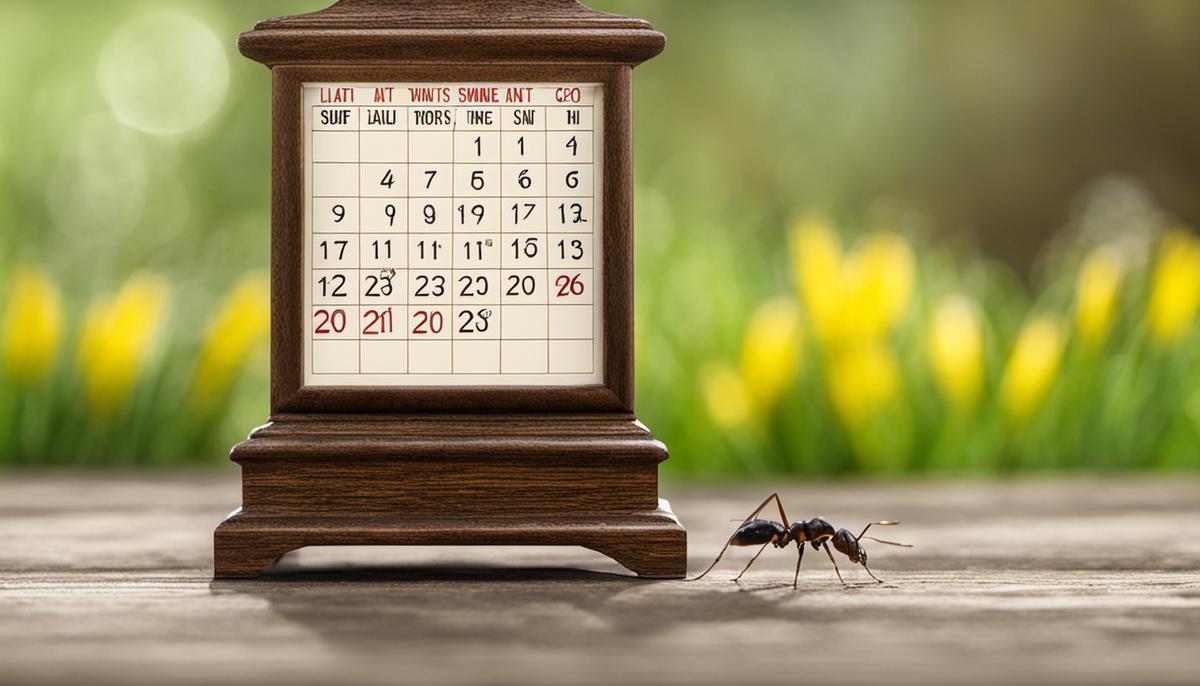
Taking control of an ant infestation in your lawn involves understanding their behavior, exploring ant control methods, and implementing these methods effectively. Along with action, prevention plays an integral role, and for that, investing time in learning about preventive measures and correct lawn maintenance can be highly beneficial. The comprehensive approach to this common problem is key to not only reclaiming your lawn from these industrious insects but also maintaining its health and aesthetic value. Remember, while each method may have its own set of advantages and disadvantages, choosing the right solution largely depends on your specific situation. So, be informed, act wisely, and you’ll soon be able to enjoy your ant-free lawn once more.



